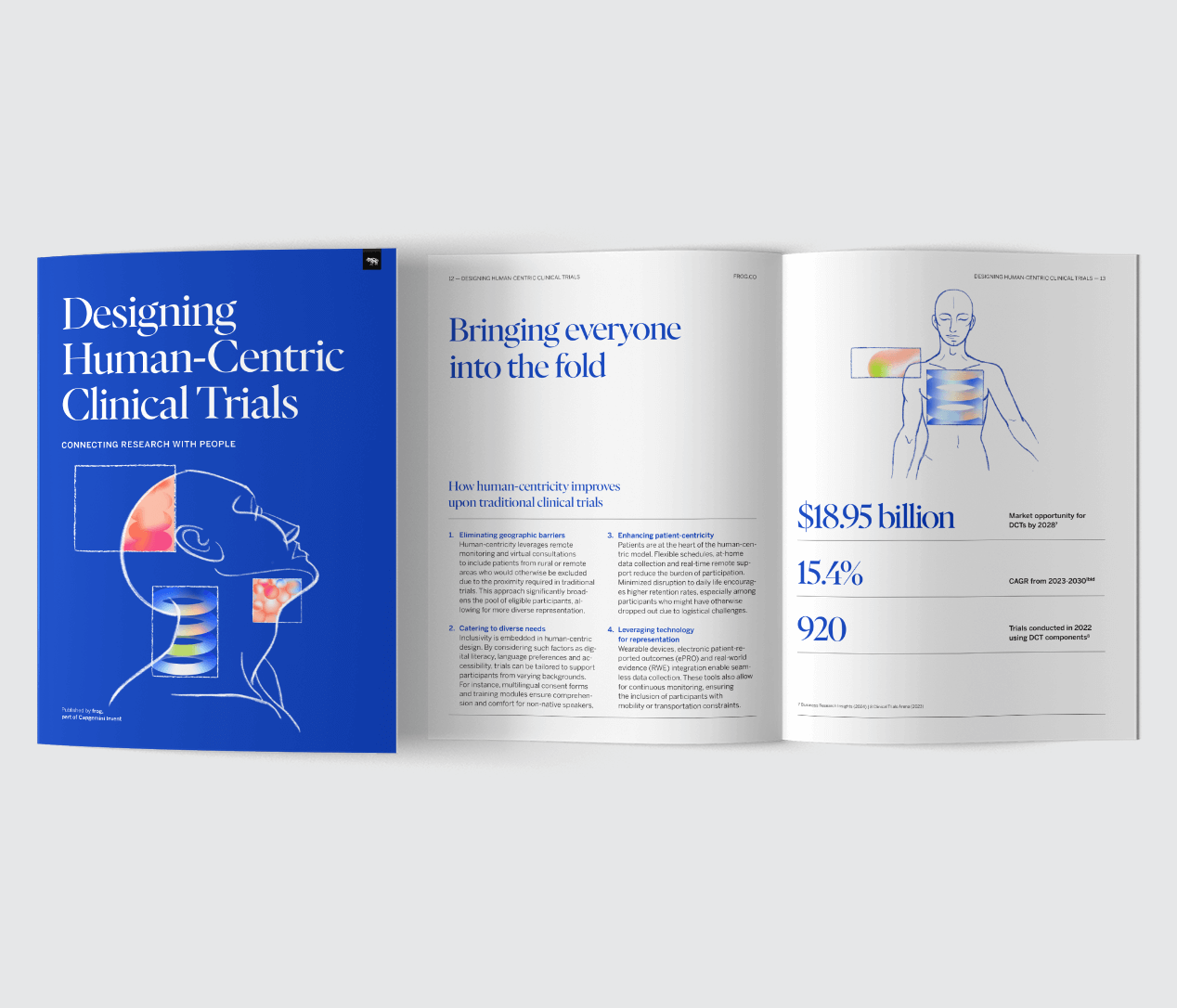
Designing Human-Centric Clinical Trials
The rate of technological progress shows no sign of slowing down. What was once measured in years is now measured in months. And yet, clinical trials really haven’t changed all that much in the past decade. This is surprising because there has never been a more urgent need to improve the development of new treatments. But the status quo ends today.
For pharmaceutical companies, the priority is to increase the speed of trial and therefore the time to market, reduce cost, increase patient retention and improve the likelihood of discovering new end points. All this must be achieved without impacting patient safety or treatment efficacy. Clinical trials that take a human-centric approach to their design are more likely to deliver on these goals.
Human-centric clinical trials, utilizing decentralized and hybrid models, are reshaping medical research. By improving our understanding of both patient and healthcare professional behaviors–the lifeblood of any clinical trial–we can identify common problems and ensure we design trials that alleviate common issues and in turn improve engagement, efficiency and the overall experience for those taking part.
In this point of view, we examine how emerging technology creates opportunities to accelerate meaningful change in clinical research. We look at the impact of human-centric design that utilizes technology (e.g., telemedicine and wearable devices, remote participation solutions). This includes accelerated and more efficient drug development and the elimination of geographic, logistical and socio-economic barriers that often exclude some underrepresented groups from trial participation.
Our aim is to highlight ways to improve patient engagement, foster higher retention rates, gather richer data and promote more representative outcomes. This expert insight highlights how decentralized and hybrid clinical trials are paving the way to equitable, global healthcare solutions, ensuring life-saving treatments are accessible to all.

Human-centricity leverages remote monitoring and virtual consultations to include patients from rural or remote areas who would otherwise be excluded due to the proximity required in traditional trials.
Inclusivity is embedded in human-centric design. By considering factors such as digital literacy, language preferences and accessibility, trials can be tailored to support participants from varying backgrounds.
Patients are at the heart of the human-centric model. Flexible schedules, at-home data collection and real-time remote support reduce the burden of participation. Minimized disruption to daily life promotes higher retention rates.
Wearable devices, electronic patient-reported outcomes (ePRO) and real-world evidence (RWE) integration enable seamless data collection. These tools also allow for continuous monitoring, ensuring the inclusion of participants with mobility or transportation constraints.
From assessment to action
frog’s approach to clinical trials
At frog, we take a human-centric approach to designing clinical trials. We engage both site teams and patients to foster optimal conditions. This endows us with an understanding of the unique challenges and behavioral pressures that prevent patients from joining and adhering throughout the course of the trial.
Our methodology is designed to help clients unleash the full potential of their clinical trials, making them more efficient and effective.
frog can help you with:
- Design and planning
- Patient experience and monitoring
- Technology and remote data collection
- Automation of processes
We believe clinical trials must be accessible to people from all walks of life. A flexible, hybrid approach is the key to success.
Designing Human-Centric Clinical Trials - Connecting Research with People
Download the report now

Jenny is a design leader who specializes in Lean UX methodologies to product and service design. Integrating the design process into the agile build, measure and learn cycles to foster collaboration and knowledge building within teams. She has developed a series of workshops which can be tailored to any project. Her expertise lies in bringing a human-centered approach to Healthcare and Life Science clients in the application of ML, AI and NLP to big data. She provides design and strategic direction to multi-disciplinary teams of developers, strategists, data scientists, clinicians and designers and UX writers. This includes creating innovative and exciting solutions for every type of project, from large enterprise apps and rapid validation for start-ups to campaigns for market leading brands.

As an associate director of Service Design, Andrew works with clients throughout a variety of industries and sectors. He has extensive experience working across the pharmaceuticals and life-sciences space, having helped clients envision strategies for digital solutions and services. He also supports teams as they work towards executing that vision and putting products and services into the hands of the end users. The output of this approach results in achieving and surpassing business and user outcomes, while also enabling clients and teams greater understanding of how and why user-centered outcomes can drive business goals and targets. At frog, he has worked with Sanofi, a global pharmaceutical brand, OVO Energy, and Unilever.
We respect your privacy
We use Cookies to improve your experience on our website. They help us to improve site performance, present you relevant advertising and enable you to share content in social media. You may accept all Cookies, or choose to manage them individually. You can change your settings at any time by clicking Cookie Settings available in the footer of every page. For more information related to the Cookies, please visit our Cookie Policy.